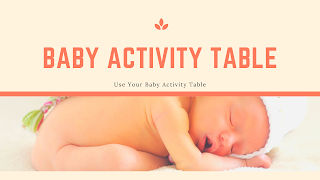How to Use Your Baby Activity Table
You've just entered the league of motherhood, and keeping in mind that you're sweet bundle of joy is speedily growing up, you know that some intervention is required for you to at least do the dishes. Mothers can sure attest to such challenges, as long as their kids are often quite handful. Don't fret. There's a solution out there. An activity table is what you need. There exists a plethora of activity tables out there filled with numbers, letters, and kid's songs to entertain and aid in your baby's growth. But how exactly do you use such a table? Let's cut the jibber-jabber and delve right into it.
Removing all four legs and tilting the table on the couch
It typically gets done when the baby is between 0-4 months. Basically, let the baby lie on their side as they engage with the table. It's essential to speak to the baby about the songs and the different sound effects they are experiencing. Letting them lie on the side also helps them to find their mid-line position. In case of difficulty, just put a shawl that acts a wedge behind their back for help.
Take out all the legs and place it flat on the bottom (2-6 Months)
At this stage, you can aid the baby to shift from using their belly to sitting in an upright position. It gives the baby activities to do while sitting up. It's essential to stay close to your baby at this time as it risks bumping its head during its tummy time stage while trying to assume an upright position. If still not yet an independent sitter, no worries. You can even support her back as she assumes a sitting position.
Taking out two legs to assume a 45-degree angle (4-8 Months)
It allows the baby to engage in mid-line play as they can now reach the table and punch the buttons more easily. It is a much stable position for the baby as they can now sit; shift their weight from side to side as they engage with various activities. A baby advanced in their tummy time stage will find it more pleasing as they freely engage with their hands.
Taking out all legs and placing it on a cushions ( 6-9 Months )
It helps the baby assume a pre-crawling position by shifting the weight from the hands to the legs. It also reduces the pressure from its core and upper body strength. Your baby can now move up and down compared to scooting or rolling.
Putting back the four legs and wedging the table into a corner (9-12 Months)
Newly standing babies tend to lean and push their weight on the table. To avoid tipping off and unnecessary injuries, wedge the table, maybe to a couch to prevent movement. Supervision is still essential. In as much as they are standing, those little legs are still learning to support the weight and might often come tumbling down.
Standing the table on all four legs and ensuring the baby reaches all the corners (10-12+ Months)
For some babies, it's going to take a short time to abandoning of the table and completely walk off , but once it gets done, the cruising stage begins. Finally, superman and woman have the center to hold out all the small stunts they have been craving. They must get access to all the corners of the table as they are comfortable enough to move around.
Conclusion
Despite the introduction of baby activity table for one year old, we must keep a constant eye on the little ones. Having a stable activity table doesn't mean that the child is safe, as minor accidents can still happen. It always pays to be proactive during the developmental stages of your child.




Comments
Post a Comment